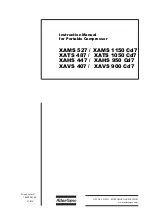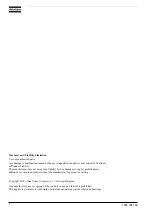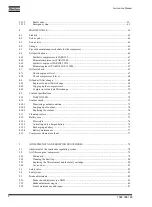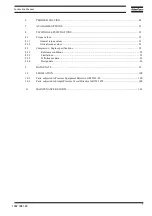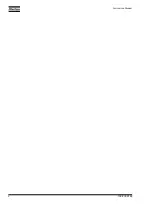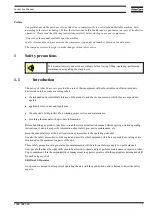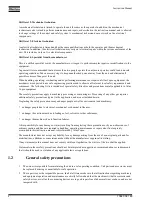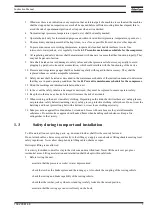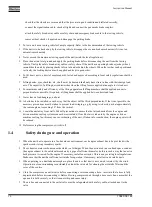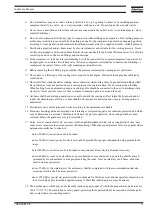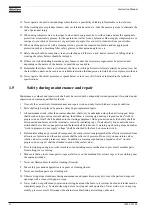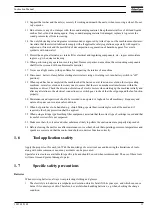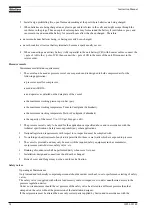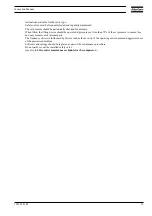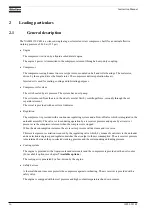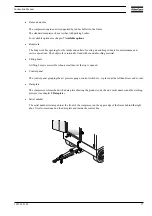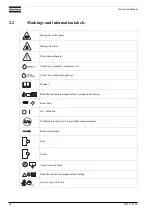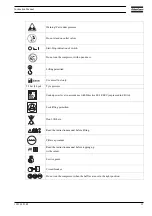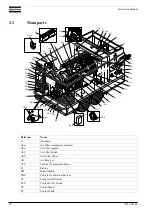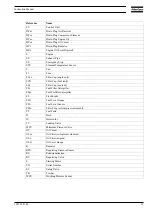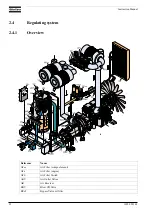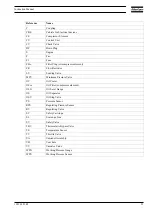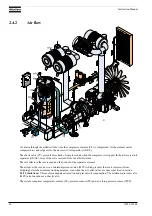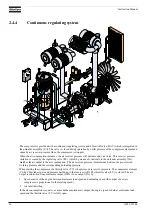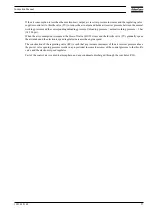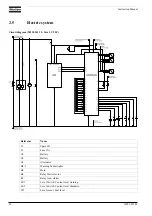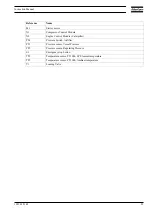
Instruction Manual
14
1092 0381 48
2
Install a sign prohibiting fire, open flame and smoking at the post where batteries are being charged.
3
When batteries are being charged, an explosive gas mixture forms in the cells and might escape through the
vent holes in the plugs. Thus an explosive atmosphere may form around the battery if ventilation is poor, and
can remain in and around the battery for several hours after it has been charged. Therefore:
•
never smoke near batteries being, or having recently been, charged,
•
never break live circuits at battery terminals, because a spark usually occurs.
4
When connecting an auxiliary battery (AB) in parallel to the unit battery (CB) with booster cables: connect the
+ pole of AB to the + pole of CB, then connect the - pole of CB to the mass of the unit. Disconnect in the
reverse order.
Pressure vessels
Maintenance/installation requirements:
1
The vessel can be used as pressure vessel or as separator and is designed to hold compressed air for the
following application:
•
pressure vessel for compressor,
•
medium AIR/OIL,
•
and operates as detailed on the data plate of the vessel:
•
the maximum working pressure ps in bar (psi),
•
the maximum working temperature Tmax in
Centigrade
(
Fahrenheit
),
•
the minimum working temperature Tmin in
Centigrade (Fahrenheit)
,
•
the capacity of the vessel V in l (US gal, Imp gal, cu.ft).
2
The pressure vessel is only to be used for the applications as specified above and in accordance with the
technical specifications. Safety reasons prohibit any other applications.
3
National legislation requirements with respect to re-inspection must be complied with.
4
No welding or heat treatment of any kind is permitted to those vessel walls which are exposed to pressure.
5
The vessel is provided and may only be used with the required safety equipment such as manometer,
overpressure control devices, safety valve, etc.
6
Draining of condensate shall be performed daily when vessel is in use.
7
Installation, design and connections should not be changed.
8
Bolts of cover and flanges may not be used for extra fixation.
Safety valves
Operating & Maintenance
Only trained and technically competent personnel should consider overhaul, re-set or performance testing of safety
valves.
The safety valve is supplied with either a lead security seal or crimped cover to deter unauthorised access to the
pressure regulation device.
Under no circumstances should the set pressure of the safety valve be altered to a different pressure than that
stamped on the valve without the permission of the installation designer.
If the set pressure must be altered then use only correct parts supplied by Seetru and in accordance with the


